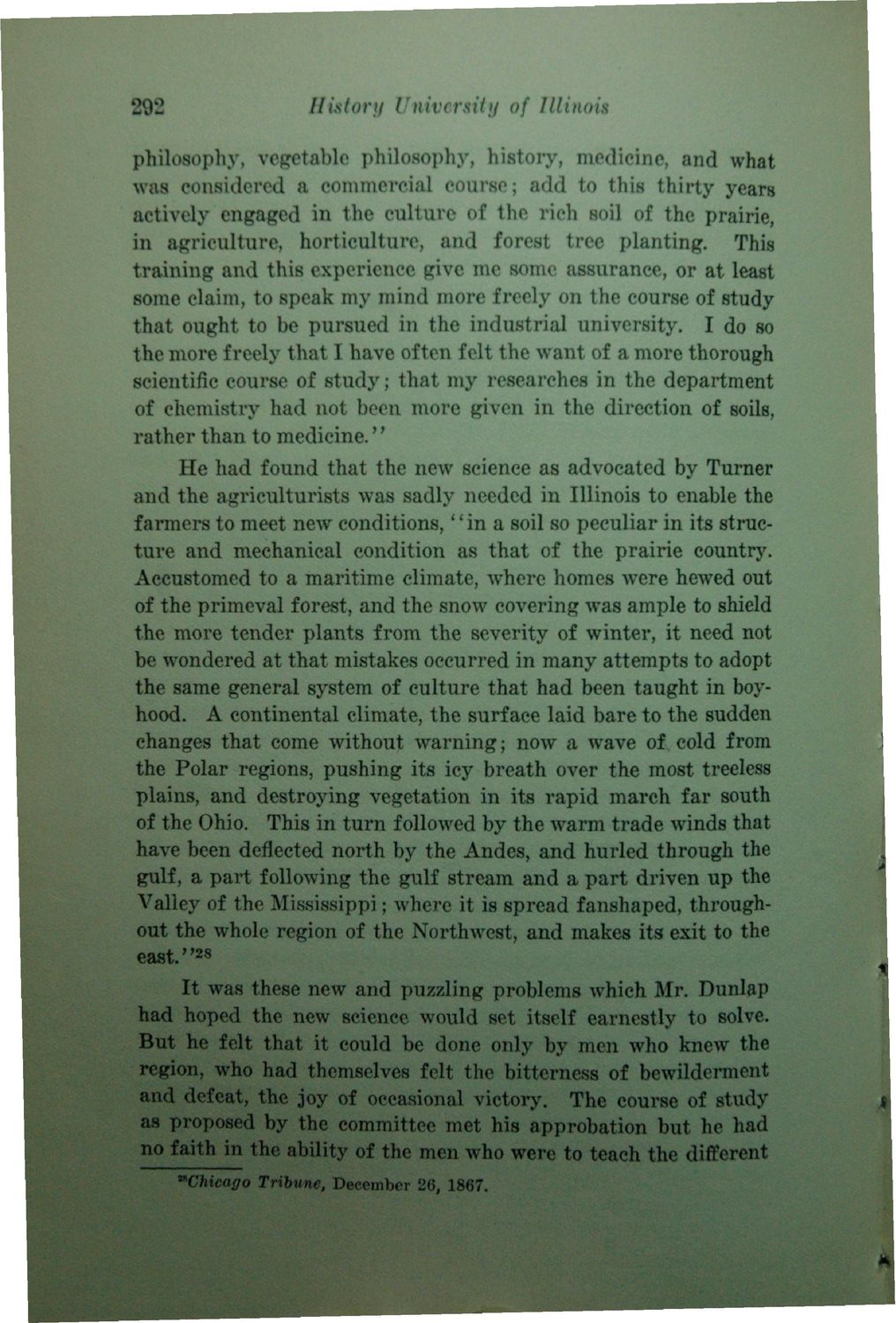| |
| |
Caption: Book - History of the University (Powell)
This is a reduced-resolution page image for fast online browsing.

EXTRACTED TEXT FROM PAGE:
292 History University of Illinois philosophy, vegetable philosophy, history, medicine, and what was considered a commercial course; add to this thirty years actively engaged in the culture of the rich soil of the prairie, in agriculture, horticulture, and forest tree planting. This training and this experience give me some assurance, or at least some claim, to speak my mind more freely on the course of study that ought to be pursued in the industrial university. I do so the more freely that I have often felt the want of a more thorough scientific course of study; that my researches in the department of chemistry had not been more given in the direction of soils, rather than to medicine." He had found that the new science as advocated by Turner and the agriculturists was sadly needed in Illinois to enable the farmers to meet new conditions, "in a soil so peculiar in its structure and mechanical condition as that of the prairie country. Accustomed to a maritime climate, where homes were hewed out of the primeval forest, and the snow covering was ample to shield the more tender plants from the severity of winter, it need not be wondered at that mistakes occurred in many attempts to adopt the same general system of culture that had been taught in boyhood. A continental climate, the surface laid bare to the sudden changes that come without warning; now a wave of cold from the Polar regions, pushing its icy breath over the most treeless plains, and destroying vegetation in its rapid march far south of the Ohio. This in turn followed by the warm trade winds that have been deflected north by the Andes, and hurled through the gulf, a part following the gulf stream and a part driven up the Valley of the Mississippi; where it is spread fanshaped, throughout the whole region of the Northwest, and makes its exit to the east." 28 It was these new and puzzling problems which Mr. Dunlap had hoped the new science would set itself earnestly to solve. But he felt that it could be done only by men who knew the region, who had themselves felt the bitterness of bewilderment and defeat, the joy of occasional victory. The course of study as proposed by the committee met his approbation but he had no faith in the ability of the men who were to teach the different "Chicago Tribune, December 26, 1867.
| |